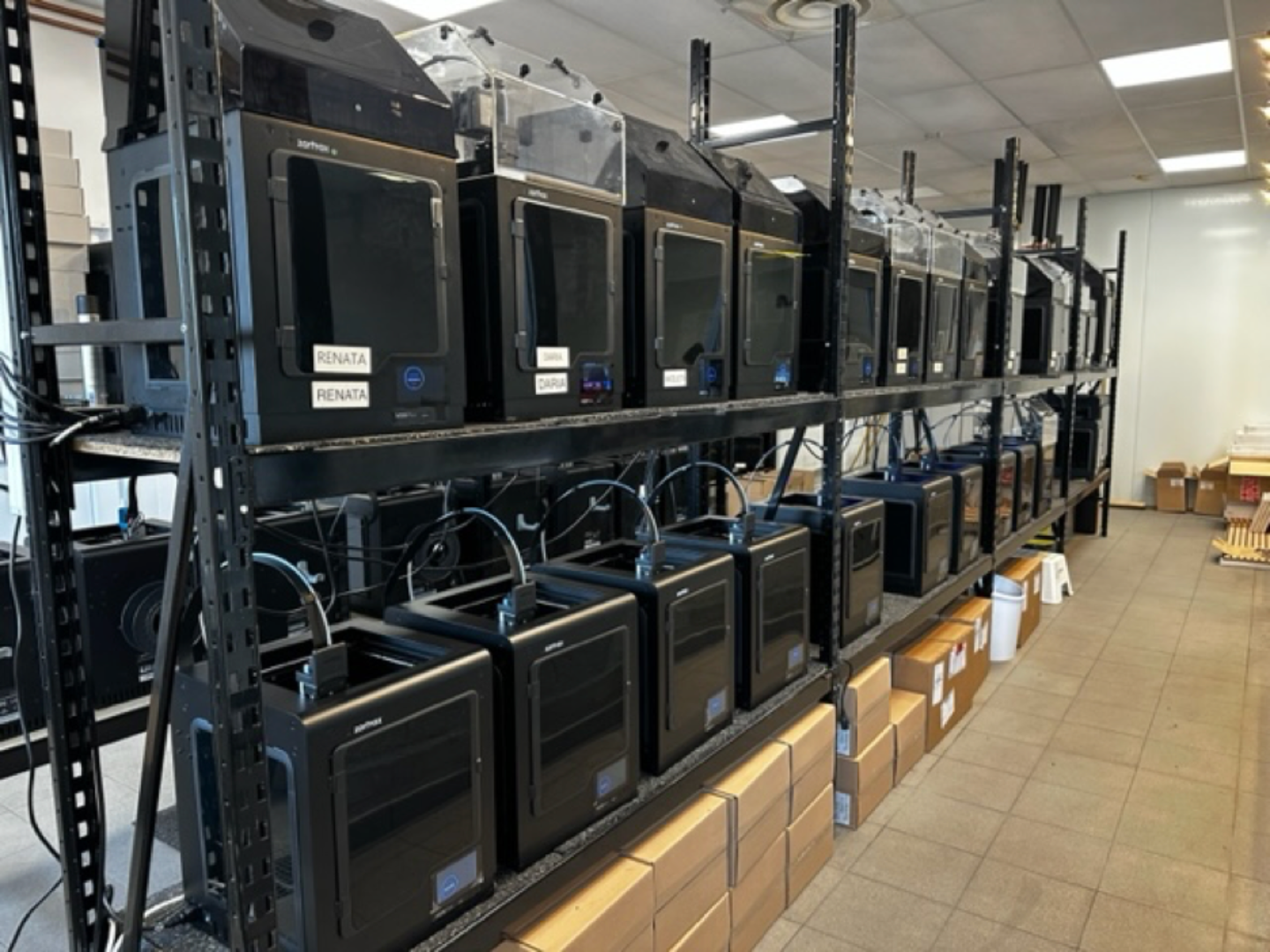Reading time : 2 minutes
Cambox, manufacturer of world-leading helmet cameras, has acquired ten new industrial 3D printers from Zortrax®, bringing its existing fleet to a total of 48 machines. This initiative aims to enhance the production capacity to better meet increasing demand and reduce delivery times, while maintaining the agility that defines us.
Sommaire
Cambox acquires 10 new industrial 3D printers
In a context of growth, Cambox, renowned for its French know-how, has strategically decided to expand its inventory of industrial 3D printers from 38 to 48 machines. This initiative aligns with a long-term vision of remaining at the forefront of innovation and technology in the industry. By investing in these new industrial assets, we aim to strengthen our position as a key player in onboard video technology.
“The expansion of our industrial 3D printer fleet, and consequently the 30% increase in our production capacity, directly corresponds to the growing demand for helmet cameras across multiple sectors: sectors where we have a historical presence—motorcycles, karting, F1, equestrian sports, and sports in general—as well as the civil and military security sectors, both in France and across Europe,” said Pierre-Antoine Pluvinage, Co-Managing Director of Cambox.
Industrial 3D printing at the heart of Cambox's production process
The manufacturing process of Cambox onboard cameras is divided into several stages. First, sourcing electronic components from French manufacturers. With them, we conduct detailed studies to custom manufacture Cambox electronic boards. Next, the production stage involves 3D printing of shells, cradles, toggles, frames, caps, and other covers in Clisson using European Zortrax® printers and technical 3D materials from Nantes-based KIMYA®. This is followed by laser cutting for facade design and product customization, and finally assembly and shipping.
“Industrial 3D printing has become a cornerstone of the fourth industrial revolution through agile production of finished parts like our camera shells. This technology is particularly suited for contexts where customization and precision are crucial, with calibrated production processes and enhanced reproducibility” adds Pierre-Antoine.
3D printing in support of the "glocal" model
Cambox operates on a “glocal” business model, combining Made in France electronics expertise from Pays de la Loire with production and assembly centers close to their markets. “Far from the highly publicized ‘giga-factories’, we focus on building a proximity model centered around mini-factories. Industrial 3D printing enhances this agility. That’s why we are preparing to open a new production facility in the United Kingdom in the coming months, with plans for expansions in the United States and Australia in 2024 and 2025” concludes our CEO.




